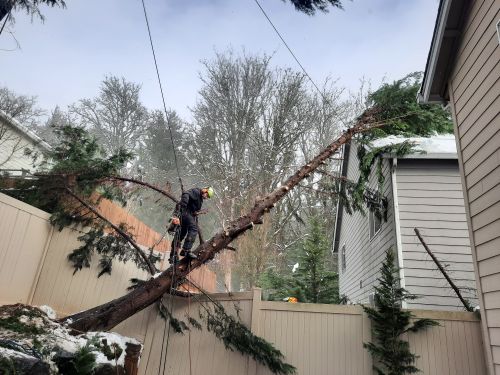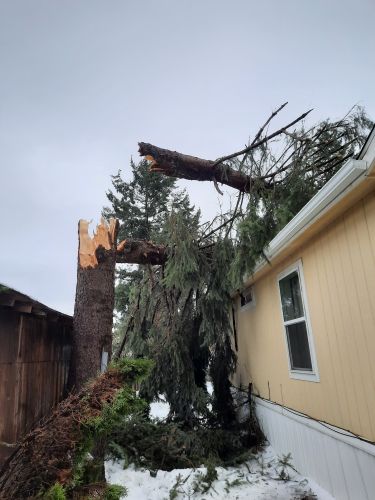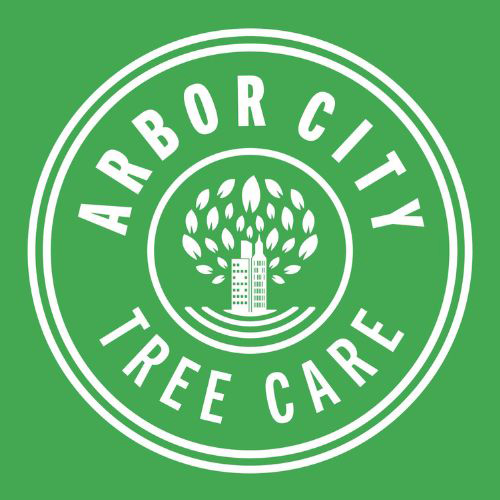Protecting Your Property and Loved Ones
Severe weather events, high winds, heavy snow, and ice storms can pose serious risks to trees, your property, and your safety. Understanding how to assess tree damage, respond quickly, and take preventive measures is essential for homeowners in the Pacific Northwest. Emergency tree safety and response involves a combination of preparation, careful evaluation, and timely professional intervention to minimize risks and protect both people and property.

Assessing Tree Damage After a Storm
After a storm, it’s important to carefully inspect your trees for damage:
- Check for Broken Branches: Look for large branches that are cracked, split, or hanging precariously. These pose immediate risks and should be addressed promptly.
- Inspect the Trunk and Root System: Trees with uprooted or leaning trunks are unstable and may fall without warning. Examine the base for exposed roots or soil displacement.
- Evaluate Canopy and Leaves: Extensive leaf loss or stripped bark can weaken the tree’s ability to recover and increase vulnerability to pests and disease.
Always approach damaged trees with caution. Even seemingly minor damage can pose hidden dangers, especially when dealing with large or mature trees.
Safety Tips During Storms
Your safety is the top priority when dealing with trees during severe weather:
- Stay Indoors: Avoid going outside during high winds or lightning. Falling branches and trees are a major hazard.
- Keep Clear of Dangerous Areas: Avoid standing under leaning trees, broken limbs, or near downed power lines.
- Warn Others: Inform neighbors or family members about unsafe trees near homes or pathways.
Never attempt to remove large or unstable trees yourself during or immediately after a storm. Professional arborists have the equipment and expertise to handle dangerous situations safely.
Call Our Experts at Arbor City Tree Care for Emergency Assistance
How to Handle Urgent Tree Issues
- Call a Certified Arborist: Professional tree services can assess risk, safely remove dangerous limbs, and stabilize leaning trees.
- Document Damage: Take photos of broken branches, fallen trees, or property damage for insurance purposes.
- Temporary Measures: If necessary, cordon off areas around hazardous trees to prevent accidents until professionals arrive.
- Avoid DIY Cutting: Using chainsaws on large or unstable trees without proper training is extremely risky and should be avoided.
Preventive Measures for Tree Safety
Preparation is key to reducing emergency risks:
- Regular Tree Inspections: Identify weak branches, decay, or root issues before they become hazards.
- Pruning and Maintenance: Remove dead or weak limbs and thin dense canopies to reduce wind resistance.
- Planting Wisely: Choose tree species suited to the local climate and avoid planting large trees too close to structures or power lines.
- Staking and Support: Young trees can be supported with stakes or cables to withstand heavy winds and snow.
The Importance of Proactive Tree Safety and Emergency Planning
Emergency tree safety and response is essential for protecting your home, family, and property in the Pacific Northwest. By understanding how to assess tree damage, prioritize safety during storms, and involve professional tree care experts, you can minimize risks and respond effectively to urgent situations. Regular tree maintenance, preventive care, and awareness of potential hazards ensure that your trees remain an asset rather than a danger, keeping your property safe year-round.

